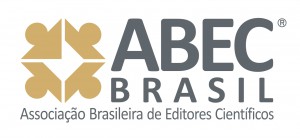Osteochondral junctions lesions in perinatal autopsies
Keywords:
Autopsy, Morphology, Ribs.Abstract
Children with death in the perinatal period can present at the exam of the ribs, alterations of the osteochondral junction (OCJ), which could be related with intrauterine growth restriction, placental alterations, maternal disorders and congenital abnormalities. The aim of this study was to identify the morphological alterations of the OCJ in autopsied children and the factors associated with its pathogenesis. We used OCJ from 254 children, which were sequentially autopsied. The Eosin and blue Masson’s trichrome stain were used for morphological and morphometrical analyses. For the measurement of cartilage oligomeric matrix protein (COMP) expression in the chondrocytes, we utilized a policlonal antibody. From the 254 OCJ analyses we found 199 (78.3%) cases with normal OCJ. In the altered OCJ group we found 55 cases (22%); 38 cases (14.9%) have matrix cartilage increased at the free bone marrow zone of the OCJ (AMC), in 10 cases (3.9%) the bizarre pattern (BZ), in 5 cases (2%) a bone closing de growth channels (MCO) of the OCJ and in 2 (0.8%) cases bone marrow cells encroaching de bone marrow free zone. The length of the proliferative zone is different in the groups with alterations of the OCJ lesions (p<0.001), being higher in MCO and AMC patients group (p<0.05). In the BZ group the length was shorter (p<0.05). The highest expression of the COMP was found in the cases, which presented the worst alterations of the OCJ (p=0.003). The COMP expression was higher in the hyperplasic zone. The OCJ alterations are more frequent in children’s autopsies in the perinatal period. The proliferative zone is increased in the morphological alterations and has significant association with the increase of the COMP expression. The OCJ analyses is a important part of the autopsies performed in the perinatal period and this study contributed for a better understanding of the mechanisms related to the etiology of these alterations.Downloads
Download data is not yet available.
Downloads
Published
2009-09-01
Issue
Section
Abstract
License
Copyright (c) 2009 Revista Eletrônica de Enfermagem

This work is licensed under a Creative Commons Attribution 4.0 International License.














